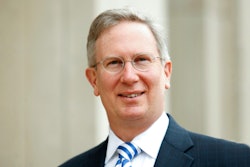Over recent decades, faculty authority at colleges and universities has increased on departmental and programmatic matters, yet their power has dropped on institutional-level decisions such as budgeting. This mixed finding comes from the 2021 Shared Governance Survey by the American Association of University Professors (AAUP), its first national snapshot of faculty authority in two decades.
Tracking how faculty roles evolved over 20 and 50 years, the AAUP compared its new data to its two most recent shared governance surveys from 2001 and 1971. Respondents this year were asked to report on pre-pandemic conditions at their institutions. AAUP released another report on the pandemic’s impact on shared governance, finding it led to an overall decline in faculty authority.
In the shared governance survey from this year, about 63% of four-year institutions reported no faculty involvement in budget decisions, an uptick compared to 2001 (12.6%) and 1971 (42.8%). Allocation of faculty positions similarly saw a decline. No faculty participated in choices on such matters at roughly 45% of institutions. That number leapt from 5.6% in 2001, and it slightly outpaced 1971’s level at 39.3%.
But regarding most academic choices, faculty authority went up. For example, 76% of institutions reported faculty were dominant or primary in deciding the program curriculum. In 2001, 54% of institutions reported faculty dominance in these areas. And in 1971, 43% of colleges and universities did so.
“The results go in two separate directions,” said Dr. Hans-Joerg Tiede, the survey’s author and the director of research at AAUP. “But it’s not a positive development when things are becoming siloed. Yes, faculty have local authority over who they hire and the curriculum. But as soon as faculty get out of their department, they don’t have central authority.”
The survey also found no significant difference in shared governance between unionized and non-unionized institutions. The questionnaire was given to senate chairs and faculty leaders at 585 institutions in a stratified random sample. This sample included small colleges with no tenure and large doctoral institutions with tenure. The overall response rate was 68 percent with roughly the same rate across institution type.
Faculty sway at the institutional level has been diminishing for years, noted Dr. Adrianna Kezar, the Dean’s Professor of Leadership and Wilber-Kieffer Professor of Higher Education at the University of Southern California. In 2019, Kezar authored The Gig Academy, which examines the gig economy concept in the university workforce.
 Dr. Adrianna Kezar
Dr. Adrianna Kezar“This is part of a trend over the past 30 years of campuses moving to a more corporatized model,” said Kezar. “They have more corporate members on their boards, and they are making more top-down decisions. The 2005 recession amplified this pattern, and we see it happening again in the pandemic. Financial stress at institutions creates opportunities to keep centralizing big decisions like budgets.”
Kezar pointed to the potential harm of faculty being left out of the room for decisions like figuring out where the university should cut costs.
“Faculty are closest to how a budget decision can impact a classroom, how that will affect the main work of the institution, which is teaching and learning,” she said. “When you lose faculty involvement, you lose the ability to meet your mission. Your mission is serving students. It is quality learning and teaching.”
Tiede added that for some institutional-level decisions, faculty understandably do not have the expertise to fully participate.
“We’re not saying that for all types of choices the faculty should equally be in power,” said Tiede. “It has been our position at AAUP for decades that faculty should have a voice in budgetary and curricular decisions. But faculty probably do not need to be as involved in the internal operations of the physical planning budget. Yet when that budget is for academic programs, professors have the expertise needed to take part.”
Kezar agreed and offered an example of what can go missing.
“If I am an administrator, and I don’t know anything about the classroom, I might say that we’re going to make a permanent decision to put all classes online to save money right now,” she said. “But actually, if I am a faculty member who teaches, I know it would be better to have labs in person because it is much more engaging than online. Yet if I don’t know the classroom experience, then I don’t know the learning impact of putting the course online. That’s just one instance.”
Dr. Michael A. DeCesare, a professor of sociology at Merrimack College, put this dilemma another way.
“The real question I think is what’s the harm of having faculty involved in discussions that concern the institution as a whole and the education that students receive,” said DeCesare. “What’s the harm in having us involved?”
Tiede is building a tool for professors to gauge their shared governance status.
“This way faculty can assess locally their authority levels and compare them to our findings,” he said, “to see where they stand against national norms.”
Rebecca Kelliher can be reached at [email protected]


















